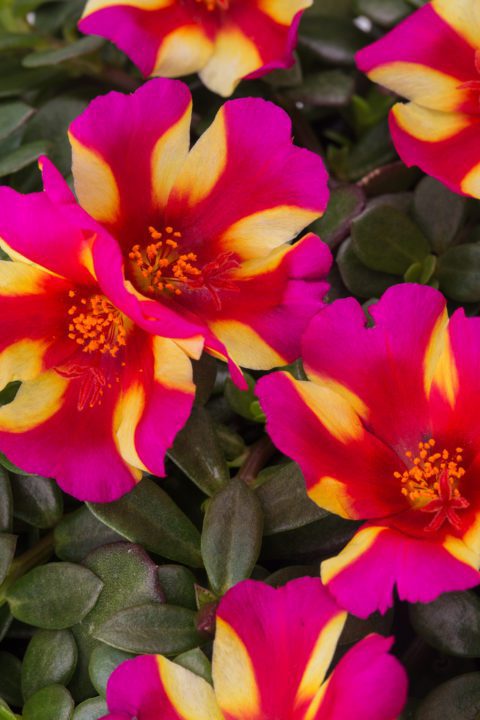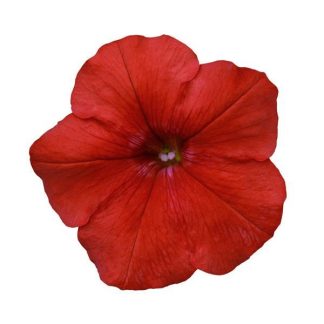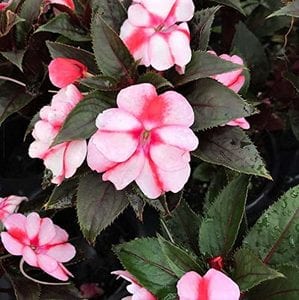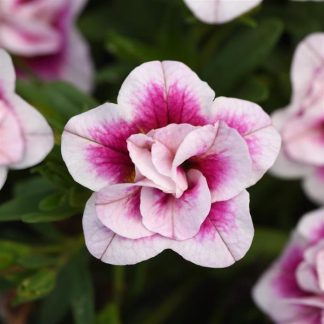Description
SeaGlass Watermelon Punch Purslane
A sun-loving splash of tropical color for every easy-care garden
A Bright Welcome
Imagine waking up to flowers that look like slices of fruit punch—raspberry streaks, sunny yellow swirls, and a hint of sunset orange all nested together. That is what SeaGlass Watermelon Punch purslane brings to your patio, porch, or garden path. We love it because it asks for almost nothing in return. Give it sunshine, let the rain roll off its succulent leaves, and watch it bloom again and again, even when the thermometer soars.
In other words, you get big impact for very little work. But most of all, you get a plant that keeps its promise: color that lasts from late spring right through the last warm days of fall.
Quick Snapshot
| Trait | Details |
|---|---|
| Habit | Low, spreading, trailing |
| Height | 4–6 inches |
| Spread | 12–18 inches |
| Bloom Colors | Yellow, fuchsia, raspberry, orange stripes |
| Light | Full sun (6+ hours) |
| USDA Zones | 9–11 (annual elsewhere) |
| Special Powers | Heat & drought tolerant, self-cleaning, pollinator-friendly |
Description
A Color Story You Can’t Miss
SeaGlass Watermelon Punch comes from a breeding program that pushes the limits of Portulaca oleracea, also called moss rose or purslane. The petals show bold stripes and rings—yellow at the core, raspberry near the edge, sometimes dotted with magenta or orange. These single blooms open wide in bright sun and close at dusk, giving a daily rhythm that feels alive in the landscape.
The fleshy, spoon-shaped leaves store water like a tiny reservoir, letting the plant shrug off dry spells without losing its bounce. Stems crawl gently over the soil, spill from baskets, and soften the edges of stone walkways. Because the blooms sit above the foliage, their colors read clearly from a distance, almost like little neon signs pointing to summer fun.
A Friend to Pollinators
Bees and small butterflies adore the open, saucer-shaped flowers. We often see hummingbirds dart in, too, sipping from multiple blossoms in a single visit. When you add SeaGlass Watermelon Punch, you invite motion and life, weaving your garden into the wider ecosystem.
Low-Maintenance by Design
The plant drops spent petals on its own, so you can skip deadheading. Its succulent anatomy means the cells hold water, resisting wilting even when midday temperatures top 90 °F. In containers, it keeps blooming where fussier annuals fade. In the ground, it ropes across bare spots, creating a drought-proof carpet.
After more than one season of trials, growers report that mildew, aphids, and stem rot rarely show up. That means fewer sprays, fewer worries, and more time to enjoy the show.
How to Care for SeaGlass Watermelon Punch
Light
- Goal: At least six hours of direct sun.
- Tip: Morning sun plus hot afternoon rays trigger the biggest color display. Plants in shade will stretch and bloom less.
Soil
- Ideal Mix: Sandy or loamy, well-drained.
- pH: Neutral to slightly acidic.
- Container Hack: Blend standard potting mix with 25 % coarse sand or fine gravel. Good drainage keeps roots happy.
Water
- New Plants: Water deeply the first week.
- Established Plants: Let the top inch dry. In a 5-inch pot, about 0.5 cup every 12 days works indoors. Outdoors, rainfall often does the job.
- Warning: Soggy soil causes root rot. When in doubt, wait a day.
Temperature & Humidity
- Sweet Spot: 70–100 °F.
- Heat Wave: No problem. Flowers may curl midday but bounce back by evening.
- Cool Nights: Below 50 °F slows growth, but plants perk up when warmth returns.
Feeding
- Containers: Apply a balanced, water-soluble fertilizer (10-10-10) every three weeks at half strength.
- In-Ground Beds: A light sprinkle of compost once per season is plenty.
Pruning & Grooming
- Self-Cleaning: No deadheading needed, yet you can pinch tips in midsummer to keep a tidy mound.
- Shape Control: Light trims redirect energy into new blooms and prevent leggy stems.
Overwintering (Optional)
Gardeners in zones 8 and colder can pot up small cuttings before frost. Place them under bright indoor lights, water sparingly, and replant outdoors after the last freeze.
Design Ideas & Uses
- Hanging Baskets
Let stems drape over the rim. Pair with trailing silver dichondra for a cool-warm contrast. - Tabletop Bowls
Mix with dwarf zinnias for an instant “mini meadow” that stays neat and compact. - Rock Gardens & Path Edges
The spreading habit fills crevices, softening hard lines while respecting dry conditions. - Succulent Combos
Combine with sedum and echeveria. The blooms provide moving color among sculptural forms. - Pollinator Strips
Border vegetable beds with SeaGlass Watermelon Punch to draw bees where you need them most.
Companion Planting
| Perfect Partners | Why They Work Well Together |
|---|---|
| Angelonia | Both thrive in high heat and give vertical interest above purslane’s spread. |
| Million Bells (Calibrachoa) | Similar water needs; offers complementary bell-shaped blooms. |
| Thyme or Creeping Rosemary | Share love of lean soil and sun; add fragrance underfoot. |
| Dwarf Ornamental Grasses | Spiky texture plays off the plant’s rounded petals. |
Together, these partners build layers of height, scent, and motion while keeping care simple.
Troubleshooting Guide
| Symptom | Likely Cause | Simple Fix |
|---|---|---|
| Blooms Close Midday | Normal response to intense sun | Wait for evening; petals reopen |
| Pale Leaves | Low fertility | Add diluted liquid feed |
| Stem Rot at Base | Constant wet feet | Improve drainage; water less |
| Sparse Flowers | Too much shade | Move pot into brighter light |
| Leggy Growth | Aging stems | Pinch tips; fertilize lightly |
Remember, healthy soil and plenty of sun solve most issues before they start.
Propagation in Four Easy Steps
- Choose a Tip: Select a non-flowering stem about 3 inches long.
- Make the Cut: Clip just below a leaf node.
- Plant in Sand: Insert the cutting into moist, sterile sand or perlite.
- Wait & Transplant: Roots appear in 10–14 days. Move to a pot or garden spot once new growth shows.
This quick process means you can multiply favorites for free or share with friends.
Frequently Asked Questions
Q: Will it reseed on its own?
A: Rarely. Flowers can set tiny seeds, but most hybrids do not come true. If you want the exact look, stick with cuttings or buy new starts.
Q: Is it edible like common purslane?
A: Common green-leaf purslane is a traditional edible, yet ornamental hybrids are grown for looks. We enjoy them with our eyes, not our forks.
Q: Can I grow it indoors all year?
A: Yes, if you have a south-facing window or grow lights. Keep nights above 60 °F and rotate the pot weekly for even growth.
Q: How does it handle coastal winds and salt spray?
A: Very well. The succulent leaves resist dehydration, and the plant tolerates light salt exposure, making it perfect for seaside decks.
Q: Do I need to deadhead?
A: Not at all. The spent petals fall away naturally, and new buds form nonstop.
A Shared Celebration of Color
We plant SeaGlass Watermelon Punch for many reasons: to honor summer’s bold palette, to welcome bees, and to claim a slice of tropical joy even when vacation is far away. You, me, and every sun-chaser out there can rely on its easy nature. It asks for light, drains, and a little space to sprawl—and then it gives back a carnival of blooms.
Bring one home. Tuck it in a pot or let it wander at the edge of your walk. Stay a moment each morning, coffee in hand, while the new flowers open. Feel the day brighten. Let us grow together, one vivid bloom at a time.




